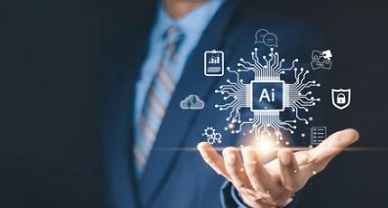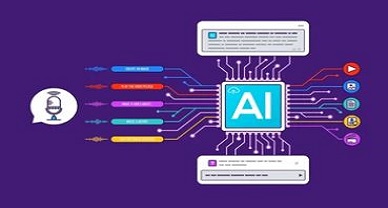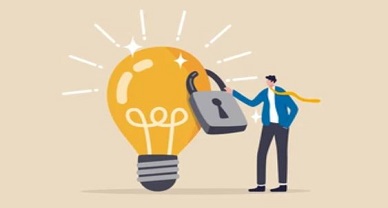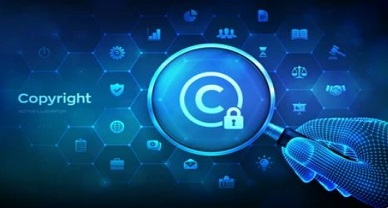Generative AI and Copyright
Introduction
With the massive amount of technological advancements in recent years, the power of artificial intelligence (AI) and creativity has resulted in significant advances in advanced generative AI technology. The introduction and advancement of generative AI technology, which is capable of producing everything from research articles to realistic artworks, has brought a revolution in the field of creativity. This way of doing things with the help of generative AI technology carries numerous legal challenges of intellectual property violation. In numerous scenarios, it raises legal concerns for which we do not have any legal provisions currently and which still need to be settled. Is copyright, patent, or trademark infringement applicable to AI creations or not, and who owns the material that AI platforms generate for you or your clients is still an unanswered question. As artificial intelligence progresses from simple task completion to distinctive material creation, the difference between human beings and machines becomes increasingly narrow. In doing so, it calls into question a fundamental assumption of many traditional intellectual property (IP) frameworks as copyright laws only protect works created by humans and not AI.
Generative AI
Generative AI is a game-changing advancement in the field of artificial intelligence, enabling computers to generate creative material independently. It uses Natural Language Processing technology. Natural Language Processing (NPL) serves as one of AI’s most fascinating functions. NLP is an area of artificial intelligence that allows machines of all kinds to comprehend, translate, and synthesise language that humans use as they write or speak.
These technologies are capable of generating new content, such as text, computer codes, music, photos, videos, and sounds, as a result of human input, like a brief textual explanation of what is wanted. ChatGPT, Gemini, Copilot, and Midjourney are some examples of generative AI tools that are presently in use. These artificial intelligence programmes have their foundations in machine learning technology and are trained with massive volumes of data, which can include millions of volumes of written and visual content. In accordance with the AI tool developer’s approach, training data sets may include openly accessible, protected data, unrestricted data or a combination of the two. A person’s input prompts the programmed AI, after which it performs a complicated set of computations, frequently millions of times, to decide what to produce. It is typically impossible to forecast what will be produced or ascertain when and to what extent specific aspects of the instructional data will impact the outcome generated.

Basic understanding of Copyright
Copyright is a legal theory that provides artists complete ownership over their creative works, preventing unauthorised use and copying. These creations can include artistic, literary, musical, and other forms of creative representation that are fixed in a tangible medium, such as paintings, books, software code, and songs. When something is created, the individual who created it automatically owns the copyright to it, which gives him/her the exclusive right to copy, share, publicly perform, exhibit, and develop additional pieces based on it. Protection under copyright usually lasts for the entire life of the owner along with a supplementary time frame, after which the work becomes within the public domain and is allowed to be openly utilised by anybody. Besides having access to their financial rights, creators frequently have moral rights, such as the ability to claim attribution (identification as the creator) and the right to maintain the integrity of their creations.
Copyright Implications of Generative AI
Copyright is an aspect of Intellectual Property Rights that ensures the creator of something has exclusive rights to determine how it is used, disseminated, and exhibited. This means that using the protected work requires prior consent from its creator. The content produced through AI does not represent a direct copy of a particular text or work; rather, the linguistic model was developed with a wide range of data that is easily accessible on the web. AI additionally possesses no copyright on the material that it generates. Finally, it is generated by a computer from previously stored data. As an outcome, AI output cannot be expected to be deemed truly creative and is ineligible for copyright protection. However, the data that was utilised for modelling AI contains copyrighted protected content. Therefore, the copyright for that data remains in the hands of its original owners. As a result, using AI for producing content is only eligible for an infringement of copyright if the data used by AI violates copyright. And if someone substantially edits AI-generated data and claims copyright on the edited work, they could potentially qualify for copyright protection. The reason is that, while AI generated the main output, its ultimate outcome is the result of significant input from humans. Copyright law protects just the expression, not the idea itself. As a result, even if the concept originates through an AI production, its expression of idea is the result of human creativity and is therefore covered by the Copyright Act. This involves not only based on language material but also any illustrations or logos created by an AI, as these are not made on their own. A linguistic model lacks the kind of human imagination required to develop logos or designs. As a result, using the material would be infringing on somebody else’s copyright because it is undeniably owned by them.
Future Directions of Generative AI and Copyright
Soon enough, nations worldwide will have legislation developed and challenged in court to handle copyright issues associated with generative AI, in addition to the plethora of other challenges that accompany the study of artificial intelligence. Alongside AI development and transformation, the entire globe must come together and work on legal advancements that seek to balance the needs of all those who matter, notably AI developers, owners, and consumers, as well as those who own copyright in the data that is required to train these programmes. There is an urgent need for these advancements should additionally offer clarification on whoever holds the rights in AI-generated work. There is an urgent need for involution in this sector by acquiring complete knowledge and clarity into AI working mechanisms, evaluating the risks and rewards that go hand in hand with AI output generation, staying updated on legal and regulatory advancements, and ensuring that internal regulations and instructions are as per the most recent laws. The field of AI needs to be addressed at the earliest and there is an urgent need to have changes in the legal frameworks with advancements in the fast-paced world where technological advancement is at its peek.
Conclusion
We can clearly see that generative AI is an emerging technology in the field of content generation in today’s world. With just a few words and clicks anyone can produce entire multi-paged paperwork, photographs, music, presentations, and a variety of other items in seconds, conserving time, money, and so on. The circumstances are expected to keep getting more and more complicated as people’s use of generative AI grows, and as technology improves at generating creative works, minimising the distinction between human and computer-generated content. AI will play a rapidly expanding role in all aspects of our daily life and therefore the law must govern its applications. In terms of intellectual property rights, notably copyright, AI will keep on to maintain a concerning position. The concerns of authorship and ownership of AI-generated works in copyright law have compelled the international community to consider and find an acceptable answer for all countries. Currently, there is no flawless rule for addressing this issue, and each approach has numerous faults. There will be serious consequences for assigning other than human ownership to AI-generated creations. In any scenario, works created by artificial intelligence need less safeguarding and human innovation should be prioritised over generative AI. Therefore, A well-rounded strategy is the world’s need. There is an urgent need for collaboration and new regulations to tackle this issue of AI-generated content which is growing day by day.
Author:- KAIF KAMAL, in case of any queries please contact/write back to us at support@ipandlegalfilings.com or IP & Legal Filing.


